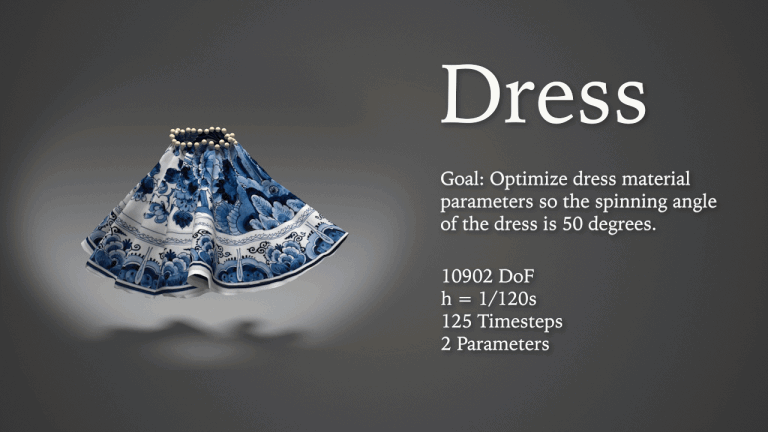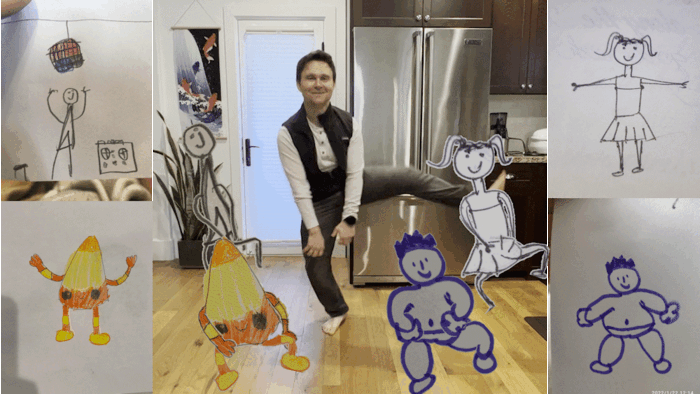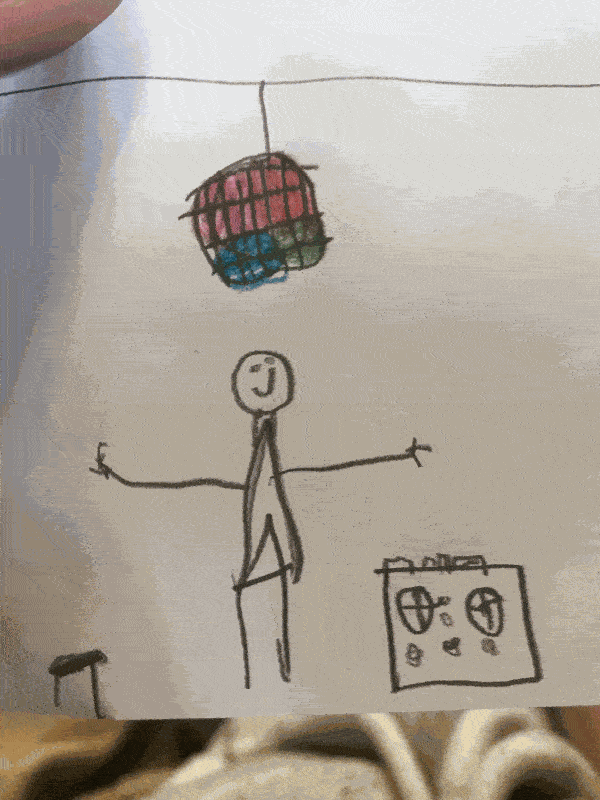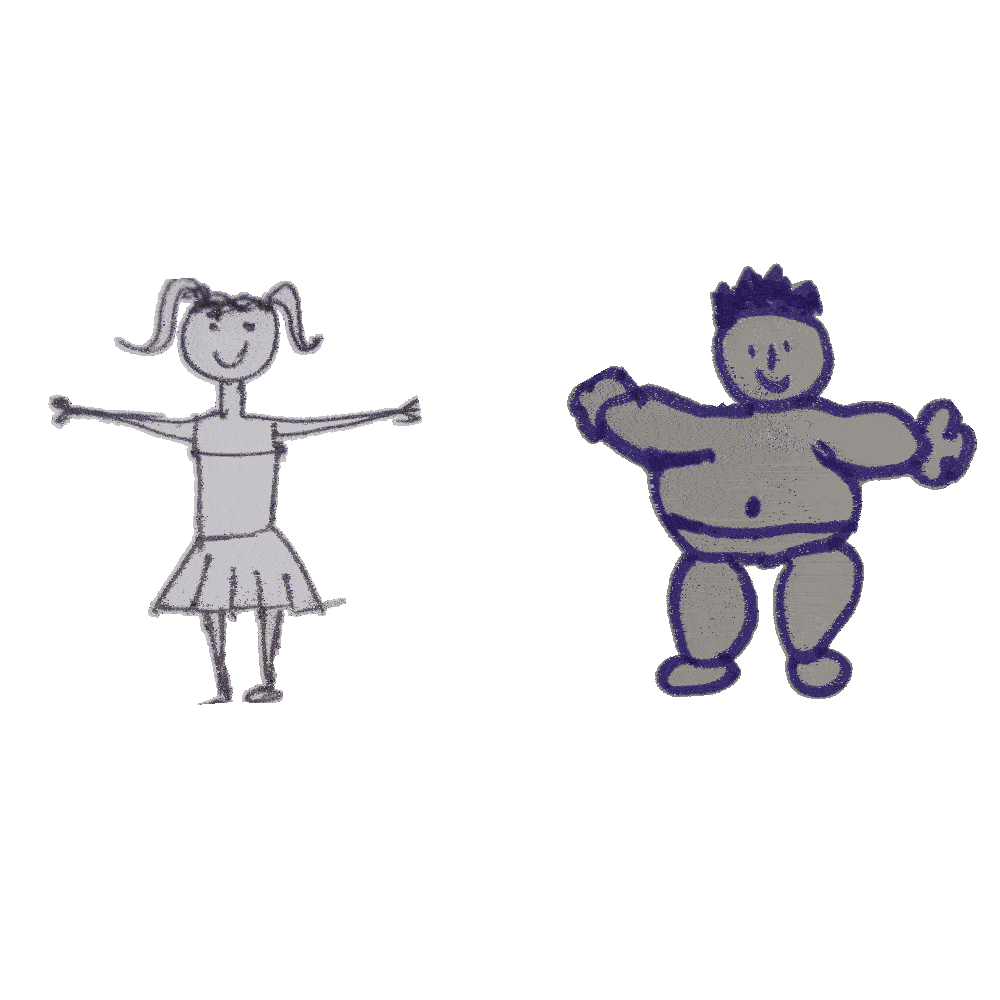
"My research, centered on the development and application of differentiable physical simulation techniques across different physical domains, aims to fundamentally transform the landscape of design in engineering and technology."
Yifei Li

DiffCloth: Differentiable Cloth Simulation with Dry Frictional Contact
Keyi Zhang: Can you tell us your initial interests in “DiffCloth”?
Yifei Li: Design problems are critical in engineering and technology, affecting both product development and innovation. A specific subset of these problems requires direct interaction with the physical world for evaluation, presenting unique challenges in design and testing phases. Examples include turbine design, where the efficiency and thrust output must be measured under actual fluid dynamics conditions, and fashion design, where the fit and comfort of clothing can only be assessed through physical wear trials.
My research, centered on the development and application of differentiable physical simulation techniques across different physical domains, aims to fundamentally transform the landscape of design in engineering and technology. By bridging the gap between virtual simulations and real-world applications, I aspire to empower designers and engineers to innovate with greater speed, efficiency, and creativity. The ultimate goal is to democratize the design process, enabling a broader spectrum of individuals to craft solutions that are not only technically feasible but also socially and environmentally beneficial.
“DiffCloth” applies this philosophy to the domain of cloth/garments, which is fundamental to our everyday interactions and central to industries like computer animation, garment design, and robotics, where there are challenging inverse design problems. In fashion design, differentiable cloth simulation can radically streamline the process of creating garments that are not only aesthetically pleasing but also functionally tailored to specific body types, by enabling designers to iteratively adjust and optimize fabric properties and garment fit based on desired outcomes.




DiffCloth: Differentiable Cloth Simulation with Dry Frictional Contact
Kyei Zhang: The creating process of you is more like trying to explore the connection from Reality to Virtual, and then the connection from virtual to reality as well.
Yifei Li: While my previous works demonstrate that the computational pipeline can produce successful design results in the simulated world, transitioning it to practical real-world applications presents a challenge. In domains like assisted-dressing robotics and cloth design, the physical behaviors of cloth and the operation of robots involve complexities not fully captured by simulations. In design problems involving fluid, the material of the fluid-solid interface can drastically affect the fluid dynamics nearby that may differ from simulation results. The discrepancies between simulations and the real-world stem from simplified assumptions and inaccuracies in physical modeling. To address these challenges, my next step in research involves bridging this simulation-to-reality gap by integrating data-driven techniques and machine learning methods with our physical models. This approach will enable us to calibrate our simulation models more accurately by adjusting the physical parameters based on real-world observations and compensating for modeling errors. By enriching our simulations with empirical data, we can enhance their predictive accuracy, facilitating a more seamless transfer of optimized designs from the virtual domain to practical, tangible applications. This strategy paves the way for realizing the full potential of computational pipelines in solving real-world design problems.





A Method for Automatically Animating Children’s Drawings of the Human Figure
Keyi Zhang: Can you tell us more about the project “Automatically Animating Children’s Drawings”? This is a very unique project among your works as it engaged a lot of people from different age spans.
Yifei Li: Children's drawings are gateways to their imagination, brimming with creativity and uninhibited storytelling. However, I noticed a significant gap in the digital tools available for children. While there are many advanced creative tools designed for adults, particularly professionals, the tools that cater specifically to children's creative expressions are remarkably sparse. This realization was the catalyst for our project. We hope to create tools to empower them to create, explore, and dream bigger. We aimed to create a system that not only brings children's drawings to life through animation but does so in a way that's both accessible and magical for users of all ages. By developing a technology that automatically animates drawings of the human figure, we tackled the inherent challenge of dealing with the wide variance in children's art. The solution we created is robust enough to ensure that anyone, regardless of age or technical skill, could see their drawings come to life. We launched the Animated Drawings Demo as a freely available public website, which quickly became a testament to our project's success and appeal. It has been used by millions worldwide, spanning different ages, from young children excited to see their drawings move to adults fascinated by the simplicity and joy of animating their childhood sketches. Moreover, our project's impact extends beyond engagement. Through the release of the Amateur Drawings Dataset, collected via the public demo, we've also contributed to academic and research communities. The dataset contains 180,000 annotated amateur drawings, which can inspire further research in computer vision and machine learning applications related to understanding and processing children's artwork. Seeing the joy and surprise on users' faces when they witness their drawings come to life has been one of the most rewarding experiences of my career.

JoinABLe: Learning Bottom-up Assembly of Parametric CAD Joints
Keyi Zhang: What’s your vision of utilizing your research in the near future?
Yifei Li: My vision for the near future involves two directions: immediate application and long-term exploration. For areas that I think are more mature, like metaverse telepresence, fashion design, and AI for creative uses, I aim to see these innovations make real-world impacts through industry collaborations, partnerships with artists, and potential startups. This approach intends to seamlessly integrate advanced technologies into practical applications, transforming sectors like digital interaction, fashion, and creative expression. Conversely, for projects with a longer research trajectory, such as bioinspired robotics and artificial heart design, my focus is on in-depth exploration and problem-solving with experts in robotics, bioengineering, and computational fluid dynamics. These collaborations are crucial for advancing our understanding and developing technologies that, while not immediately market-ready, promise revolutionary applications in medicine, environmental conservation, and beyond in the long run.







Fluidic Topology Optimization with an Anisotropic Mixture Model
INTERVIEWER: KEYI ZHANG
CURATOR: KE ZHANG, WANTONG YAO
EDITOR: WANTONG YAO, YUXUAN WEI, CHENYU LIN
GRAPHIC DESIGNER: YUXUAN WEI

Yifei Li is a PhD student at MIT CSAIL, advised by Prof. Wojciech Matusik. Yifei Li received her bachelor’s degree in Computer Science from Carnegie Mellon University, where she was advised by Prof. Jessica Hodgins. Yifei Li was selected to receive the 2020 MIT Stata Family Presidential Fellowship. Yifei has previously spent wonderful summers interning at Meta Reality Labs Sausalito (2023), NVIDIA (2022) and Meta AI (2020) as a research intern, Google (2019) as a SWE intern and Activision Blizzard (2018) working on the Call of Duty: Black Ops 4 game engine development. Outside of research, Yifei enjoys ballet, bouldering and piano. Yifei is a member of the Harvard Ballet Company.